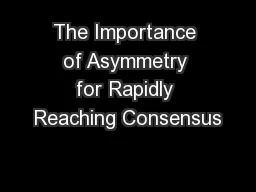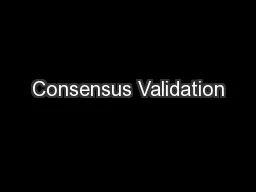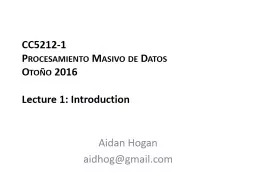PPT-Distributed Consensus (continued)
Author : pagi | Published Date : 2023-06-21
Byzantine Generals Problem Solution with signed message A signed message satisfies all the conditions of oral message plus two extra conditions Signature cannot
Presentation Embed Code
Download Presentation
Download Presentation The PPT/PDF document "Distributed Consensus (continued)" is the property of its rightful owner. Permission is granted to download and print the materials on this website for personal, non-commercial use only, and to display it on your personal computer provided you do not modify the materials and that you retain all copyright notices contained in the materials. By downloading content from our website, you accept the terms of this agreement.
Distributed Consensus (continued): Transcript
Download Rules Of Document
"Distributed Consensus (continued)"The content belongs to its owner. You may download and print it for personal use, without modification, and keep all copyright notices. By downloading, you agree to these terms.
Related Documents














